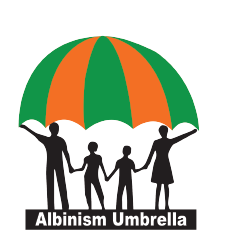I believe no one can write their destinies before they are born and no one is given the privilege to choose what they want to look like but instead we learn to appreciate and accept things we cannot change about ourselves.
“Am very happy to meet people of my kind because I thought me and my sister are the only ones who are like this. I asked God why he made just the two of us.”
Scovia Amumpaire, a 23-year-old, born of Nyatembe 1 village in Bushenyi district grew up in a violent, unsupportive community and family because of her physical appearance.
Growing up in a community filled with ignorant people myths and superstitious beliefs brought Scovia to bear crucifix of albinism. The community pointing fingers at them, calling them all sorts of abusive and insulting words and names. “They called us a curse” said Scovia as she recalls. This made them dropout of school in primary three.
Because they were born with albinism a condition where a human has no melanin making cells, Scovia was abandoned by her father who could not stand the “embarrassment” of having two daughters that were termed as a “curse” to the community because of their different skin color that appeared to be unique. There is local belief in some villages where clan members usually influence the man to run away in case the woman gives birth to children with albinism because if he stays, the clan people believe they will die hence many forced to leave.
Scovia went to stay with her grandmother but a few years later, her father came back and started mistreating them. Thanks to the Parish chief Mr. Anthony Muganzi now, Community Development Officer that came to her rescue.
Amumpaire and her sister were brought up to believe that they were the only two persons with albinism on earth until she met others of her kind during a spatial mapping research report validation workshop organized by Albinism Umbrella in the region Here, she was able to open up and express herself like any other normal person, “It would be good for the community to see me doing well, to see me join an organization then they can look at me like a fellow human being. I also want to study because I stopped in primary three so if given a chance, I would go back to school”, Scovia said.
Albinism as a health issue.
Oculocutaneous albinism is a genetically inherited autosomal recessive condition and tyrosine-positive albinism, is the most dominant type found in Africa. It is characterized by hypopigmentation of the skin, hair and eyes due to reduced melanin pigment production. In Africa, the affected individuals have sandy or almost white coloured hair, white chalky skin and light brown or blue eyes, making them more vulnerable to the harmful effects of ultraviolet (UV) radiation.
OCA has two types tyrosinase negative and tyrosinase positive. In OCA1, there is little or no melanin production due to the lack of a functional tyrosinase, the critical enzyme required in the melanin biosynthetic pathway. In the more prevalent OCA2 type there is some level of tyrosinase activity, it produces some red-yellow photo melanin pigment that gives rise to sandy colored hair and light brown irises.
Action plan on persons with Albinism
There is evidence of discrimination and stigmatization directed on persons with albinism because communities lack knowledge about albinism
Violations implicated on persons with albinism is more of an ignorant act because these people are human who deserve equal treatment like any other. As a way to respond to the violations implicated on persons with albinism which are caused due to myths, beliefs and superstitions, they end up leading to not being included in government programs, discrimination, women with albinism facing circumstances of sexual violence and lack of education. The united nations independent expert on the enjoyment of human rights by persons with Albinism took up an initiative to consult representatives from the united nations [UN], the African Union [AU], governments and organizations that support the cause like Albinism Umbrella and other civil society organizations that developed and implemented a 5 year action plan to address attacks and other human rights violations against persons with albinism in Africa.
The action plan emphasizes prevention, protection, accountability, equality and non- discrimination. It spells out 15 times bound measures in key areas, such as public education and awareness- raising, systematic data collection, research on the root causes of violence, the use of legal and policy frame works to prevent harmful practices related to witch craft and trafficking of body parts and measures to fight impunity and to ensure support of victims.
The Africa Regional Action was endorsed by the African Commission on Human and People’s Rights during its 60th Ordinary Session in May 2017 thus reflected the commitment of AU member states to implement the plan at national level through measures that include the development and implementation of a national action plan.
Last modified: February 8, 2024













